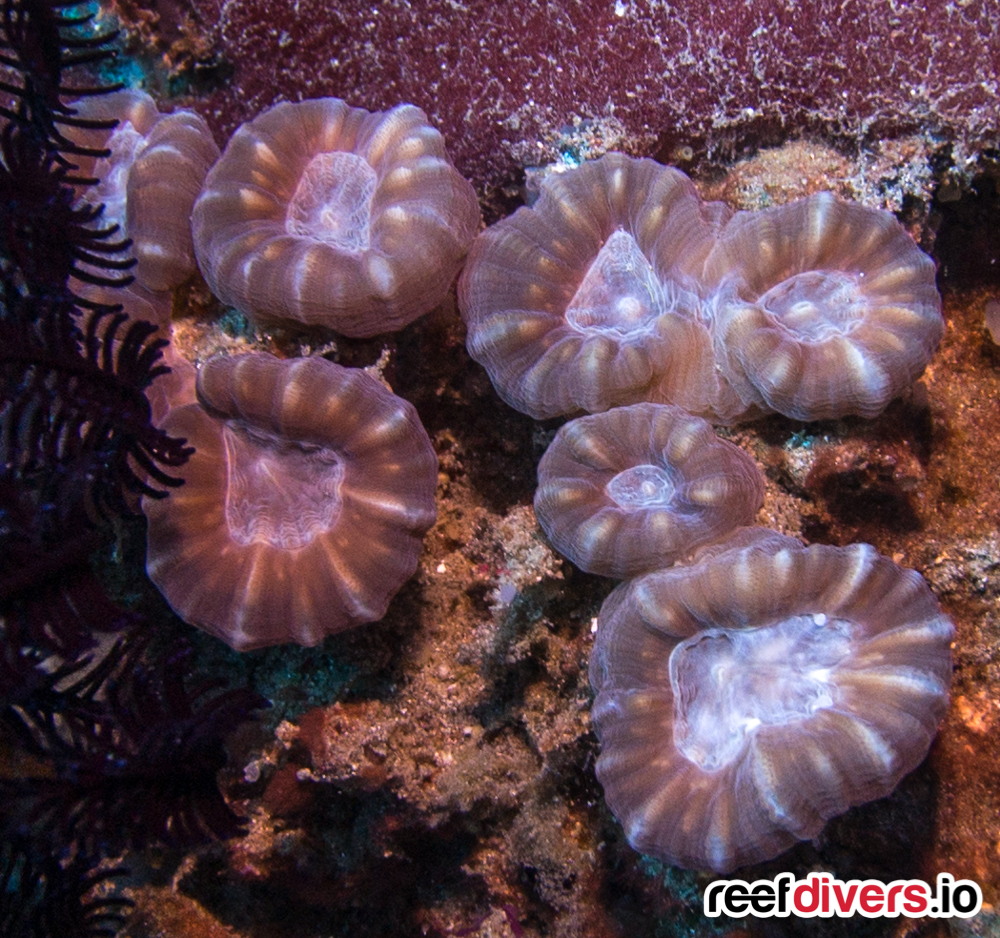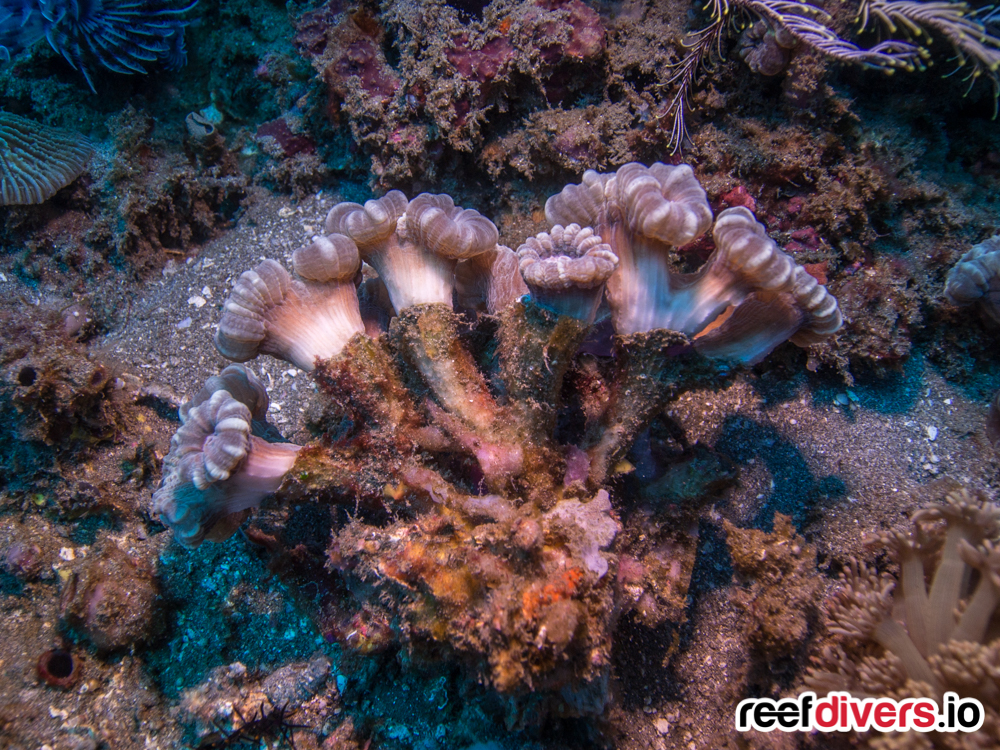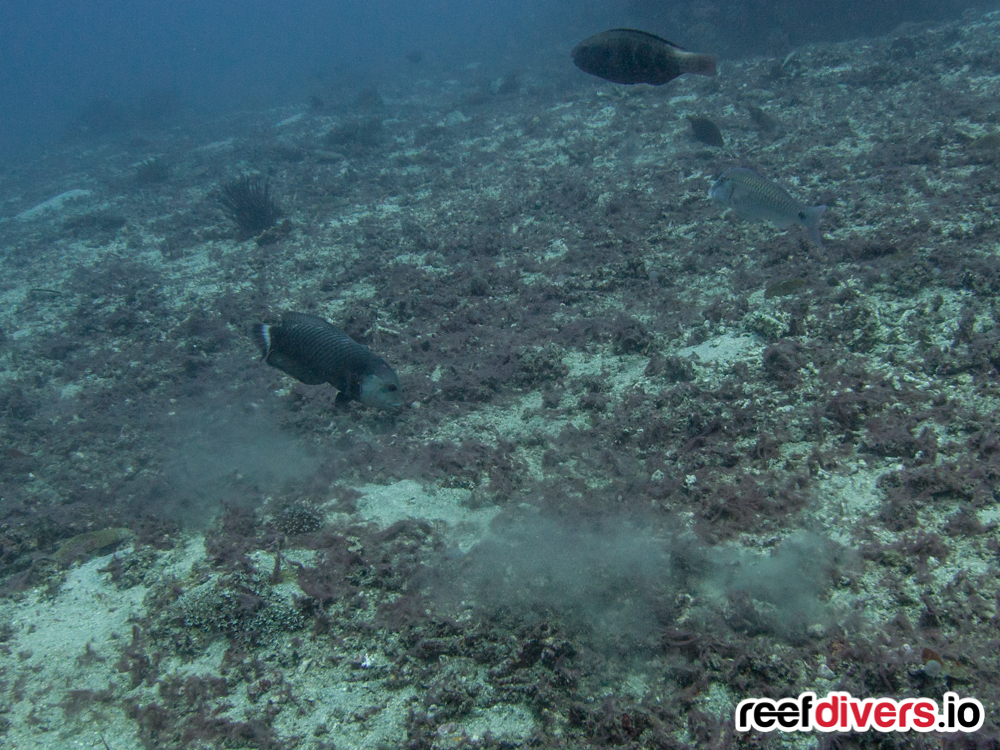Caulastrea furcata
Caulasatrea is a genus of corals which forms short branches and trumpet-shaped corallites. Each corallite is between 1-2 cm in diameter with branches up to 2-6 cm in length, depending on species.
The coral tissue of this genus is slightly inflated at the top lip of the corallite making a trumpet or bell shape apperance. In the picture below you can see the tissue inflated around the skeleton with white skeletal ridges surrounding the polyps mouth. These ridges are called septa and one of the distinguishing features of this species, Caulastrea furcata, is the septa are irregular, with some septa thicker than others.

For Caulastrea furcata, the corallites are an average of 1cm in both diameter and branch height. Once the corallite reaches this mature size you will notice a rounded corallite starting to create a peanut or figure 8 shape, before splitting in two.
This is a unique way that Caulastrea polyps divide and continue to propagate. Each polyp once mature will split apart in the center and slowly start to build it’s own corallite home. You can see this in the picture above. Clockwise the first polyp on the left is a single polyp, and then it starts to divide until a new circular corallite is formed.
While the live corallite and living branch below may only be a centimeter or two long there is often a much longer branch extending below that. This is a good example of how the visible polyps would have originated from a single source.

Colonies of Caulastrea remain rather small with a dozen or a few dozen corallites for each colony. This coral is usually found in muck or sandy bottom habitats and while the original polyp may have settled on hard substrate, the stalk cluster may have detached and can be loose in the sand.
Only the top part is living. Each polyp slowly deposits it’s skeleton below inching it’s way close to the sunlight leaving dead skeleton deposit below. It is grows, Caulastrea forms dome shaped clusters.
We found these colonies at the Tanjung Jepung dive site in PadnagBai, Bali. Along this slope there were several large rockmover wrasse, picking up branches, and tossing around colonies which is how we were able to find some Caulastrea cluster on their side.
As long as the tissue and living polyps are not covered in sand the coral will be fine on its side, and trying to secure it in the sand will only stir up more critters and bring the wrasse into investigate.
This species of Caulastrea can occur in a few different colors, from brown to green to a grey metallic color. In fact, when I spotted three different color variation growing side by side yesterday we knew we had ourselves all the pictures needed to write this article.
It is also possible for most of the branches to be covered in sand, or filled in by algae. When this happens the living tissue and corallite just peek above the surface of the sediment like little coral flowers or bells dotting the sea floor.
Next time you’re diving in the Indo-Pacific keep your eyes open for Caulastrea corals.


